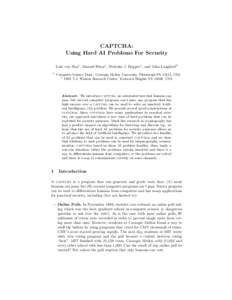 Date: 2003-09-18 19:47:10Computational neuroscience Human-based computation Complexity classes CAPTCHA Computer security Computer vision Internet bot Turing test Artificial general intelligence Luis von Ahn Artificial intelligence NP | |  CAPTCHA: Using Hard AI Problems For Security Luis von Ahn1 , Manuel Blum1 , Nicholas J. Hopper1 , and John Langford2 1 Computer Science Dept., Carnegie Mellon University, Pittsburgh PA 15213, USA CAPTCHA: Using Hard AI Problems For Security Luis von Ahn1 , Manuel Blum1 , Nicholas J. Hopper1 , and John Langford2 1 Computer Science Dept., Carnegie Mellon University, Pittsburgh PA 15213, USA
Add to Reading ListSource URL: hunch.netDownload Document from Source Website File Size: 180,55 KBShare Document on Facebook
|

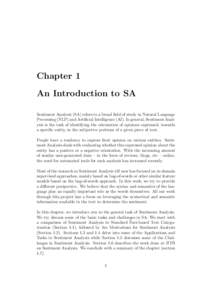
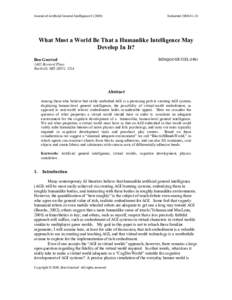
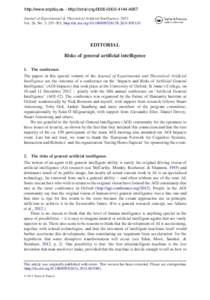
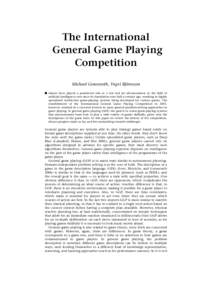
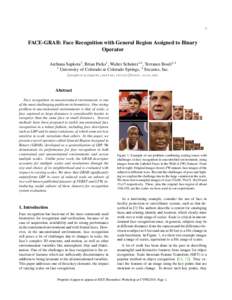
 CAPTCHA: Using Hard AI Problems For Security Luis von Ahn1 , Manuel Blum1 , Nicholas J. Hopper1 , and John Langford2 1 Computer Science Dept., Carnegie Mellon University, Pittsburgh PA 15213, USA
CAPTCHA: Using Hard AI Problems For Security Luis von Ahn1 , Manuel Blum1 , Nicholas J. Hopper1 , and John Langford2 1 Computer Science Dept., Carnegie Mellon University, Pittsburgh PA 15213, USA